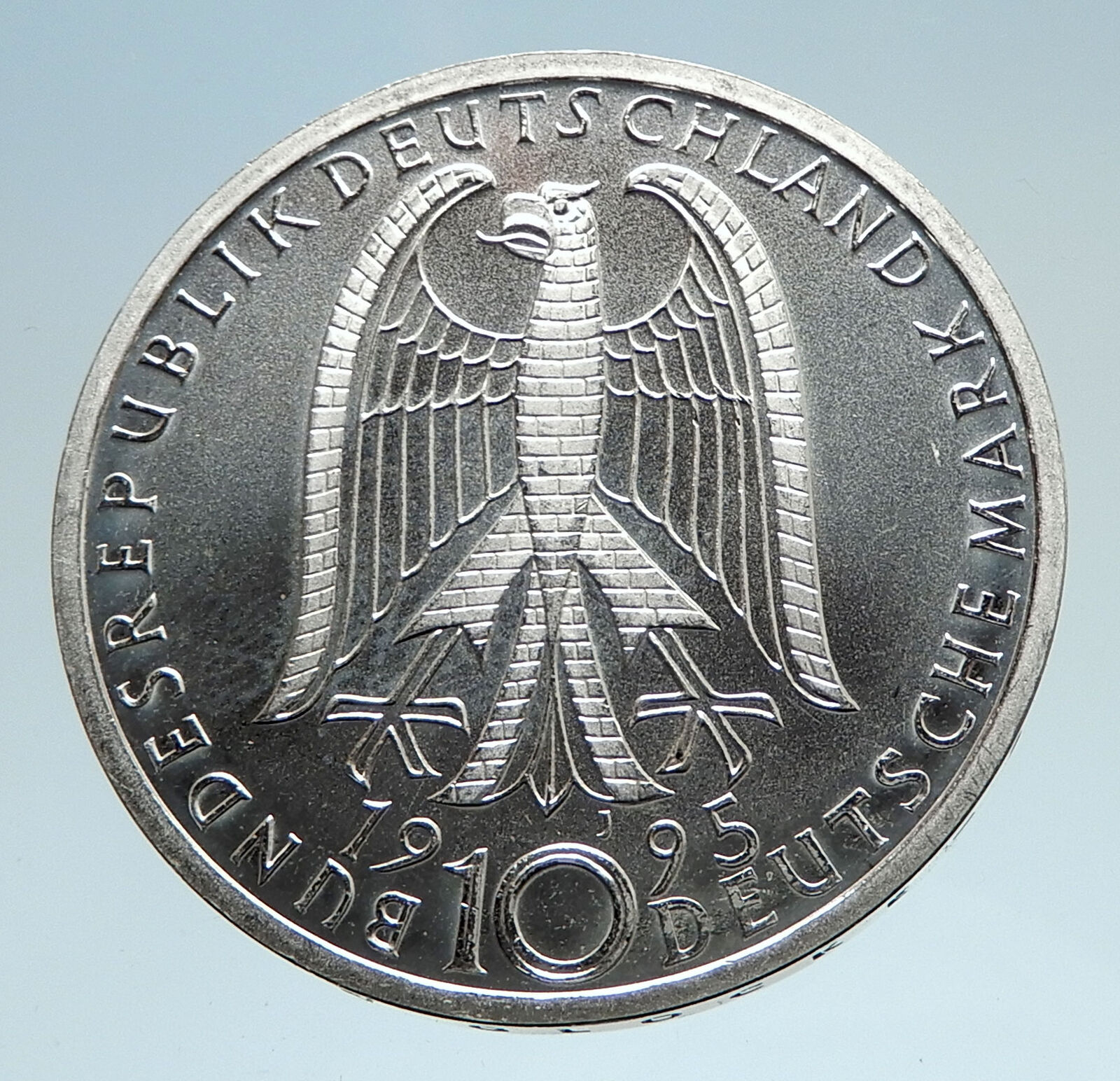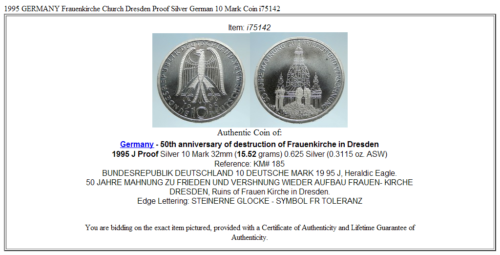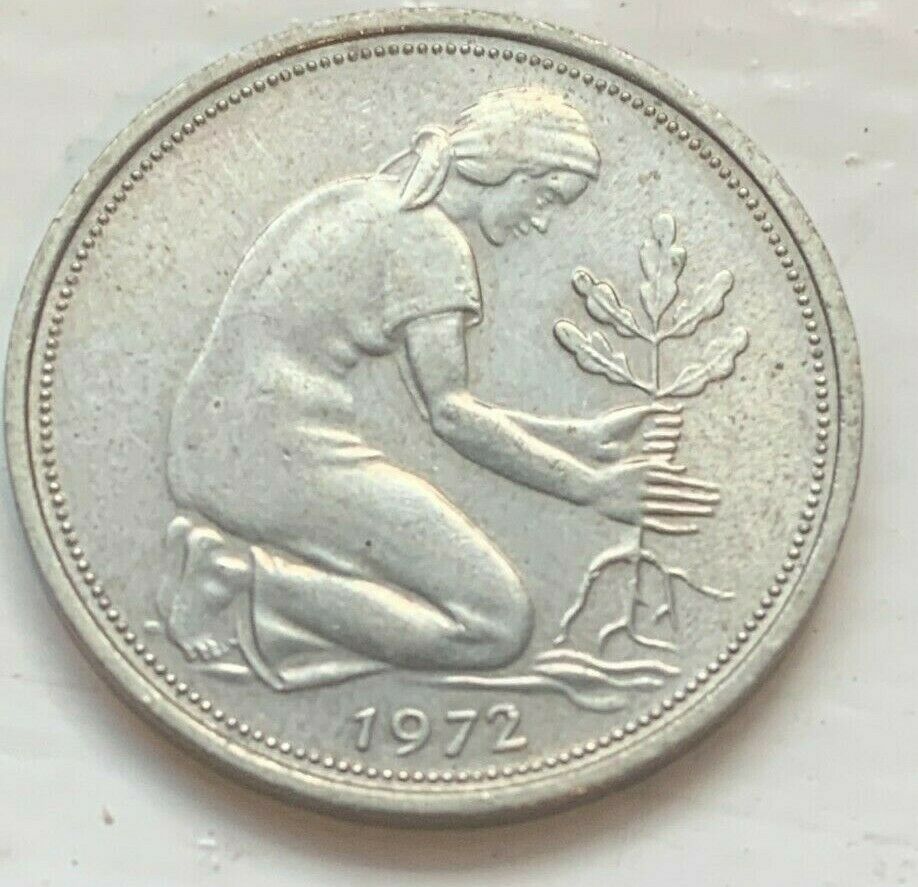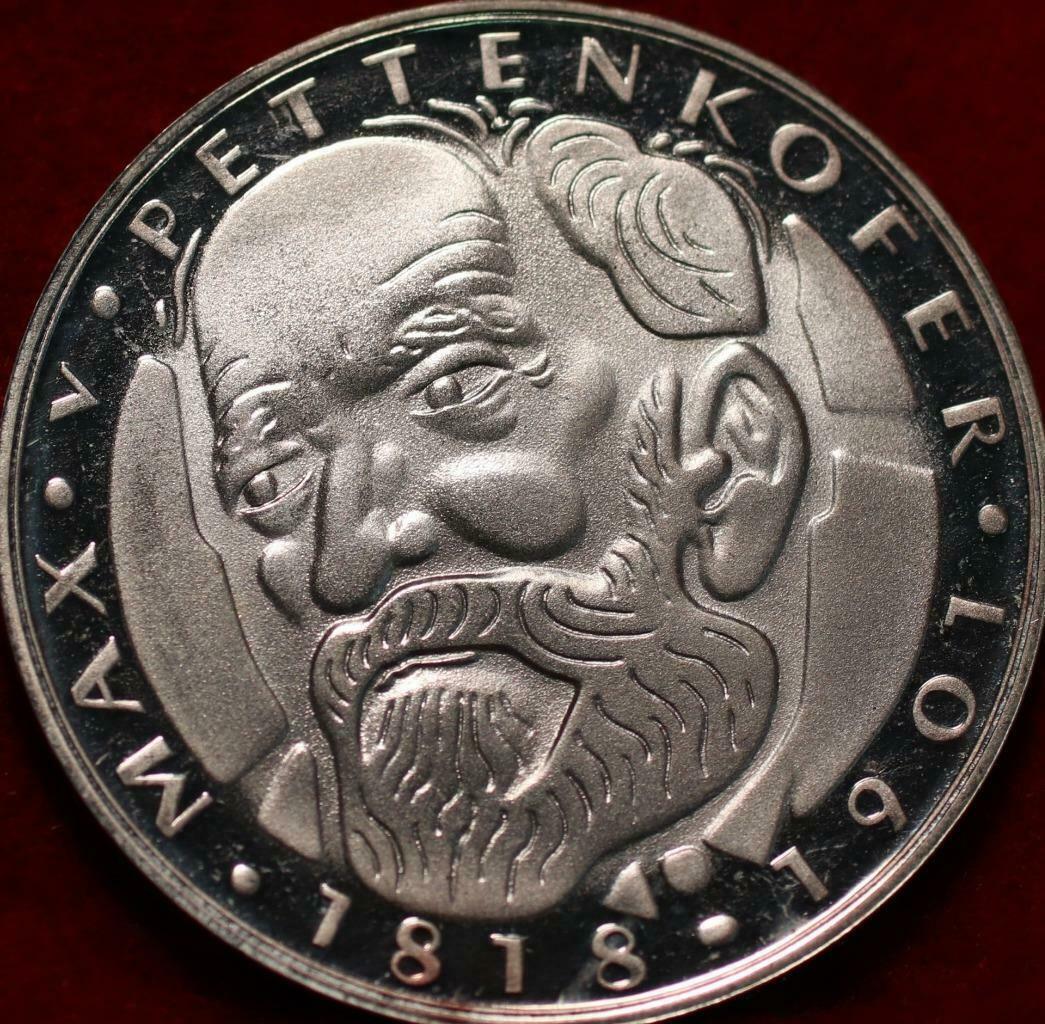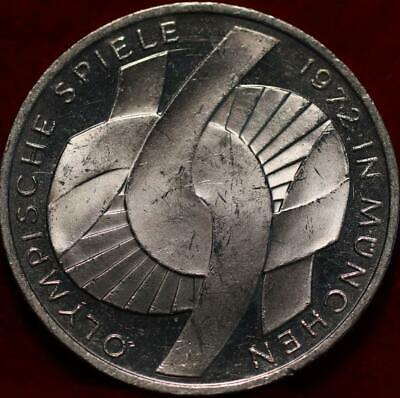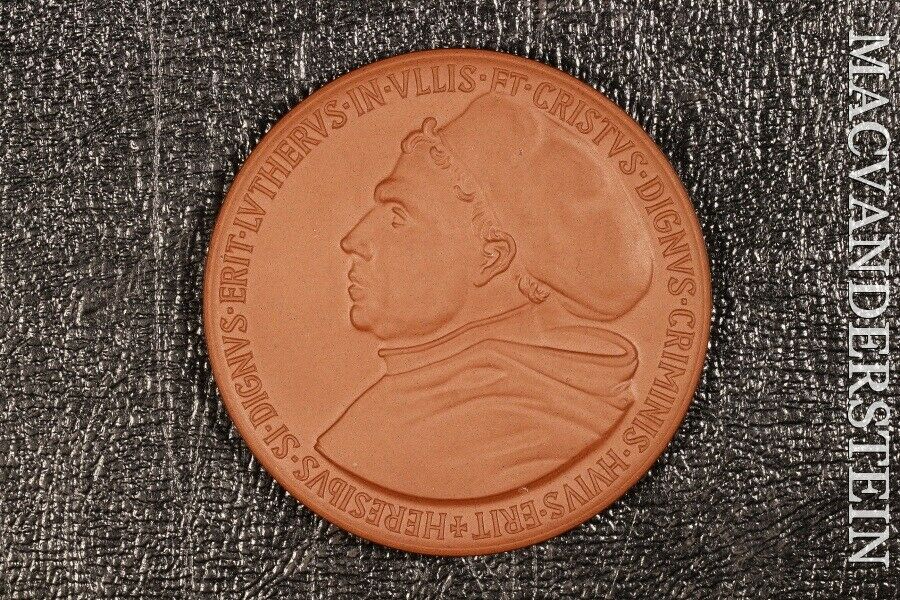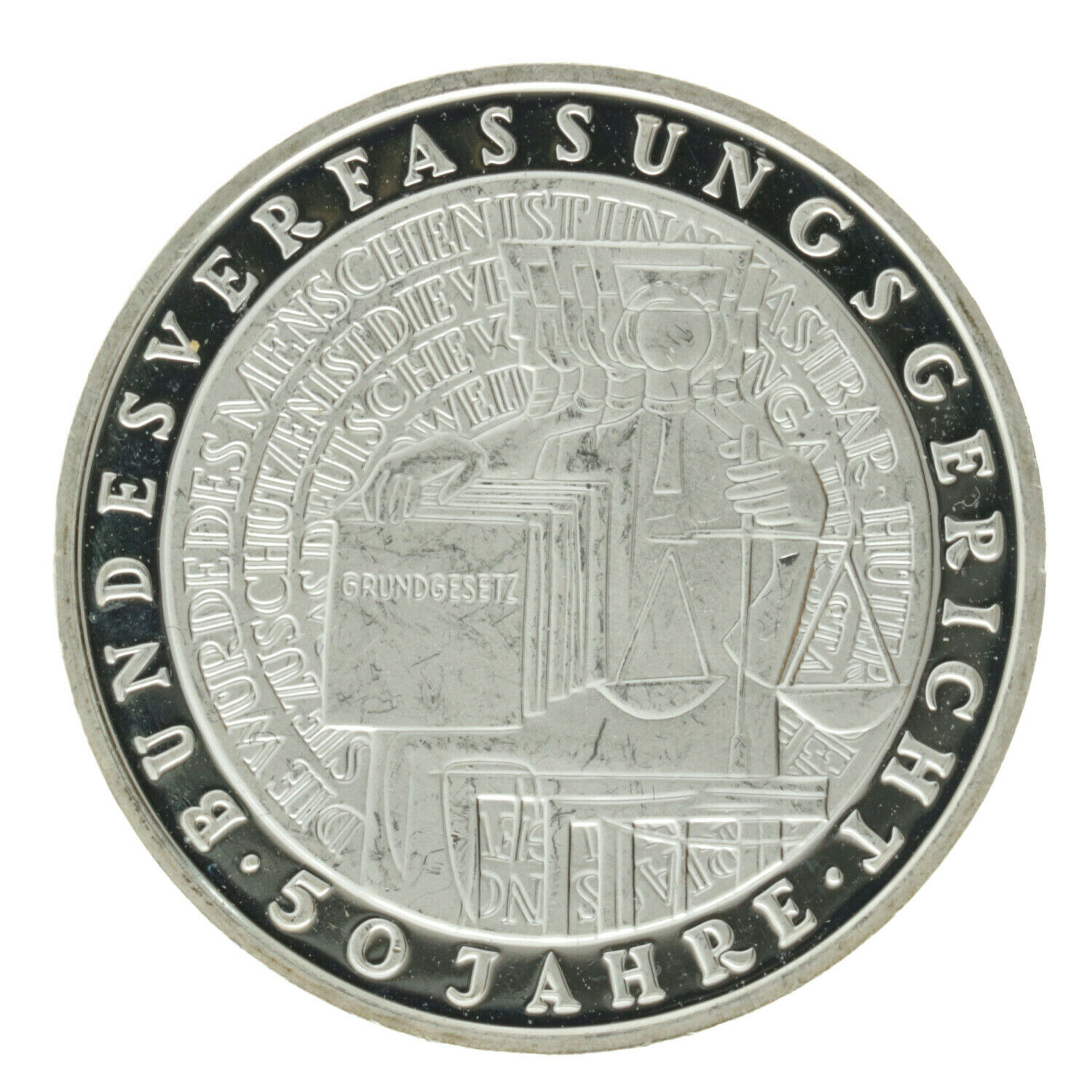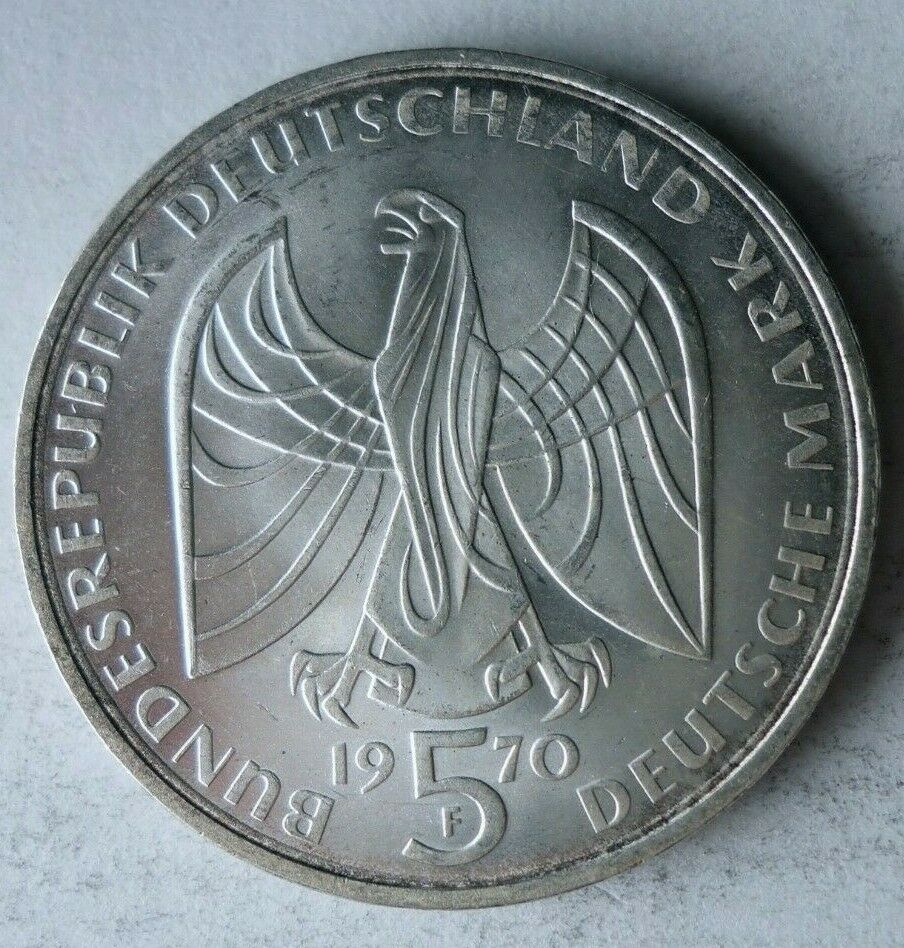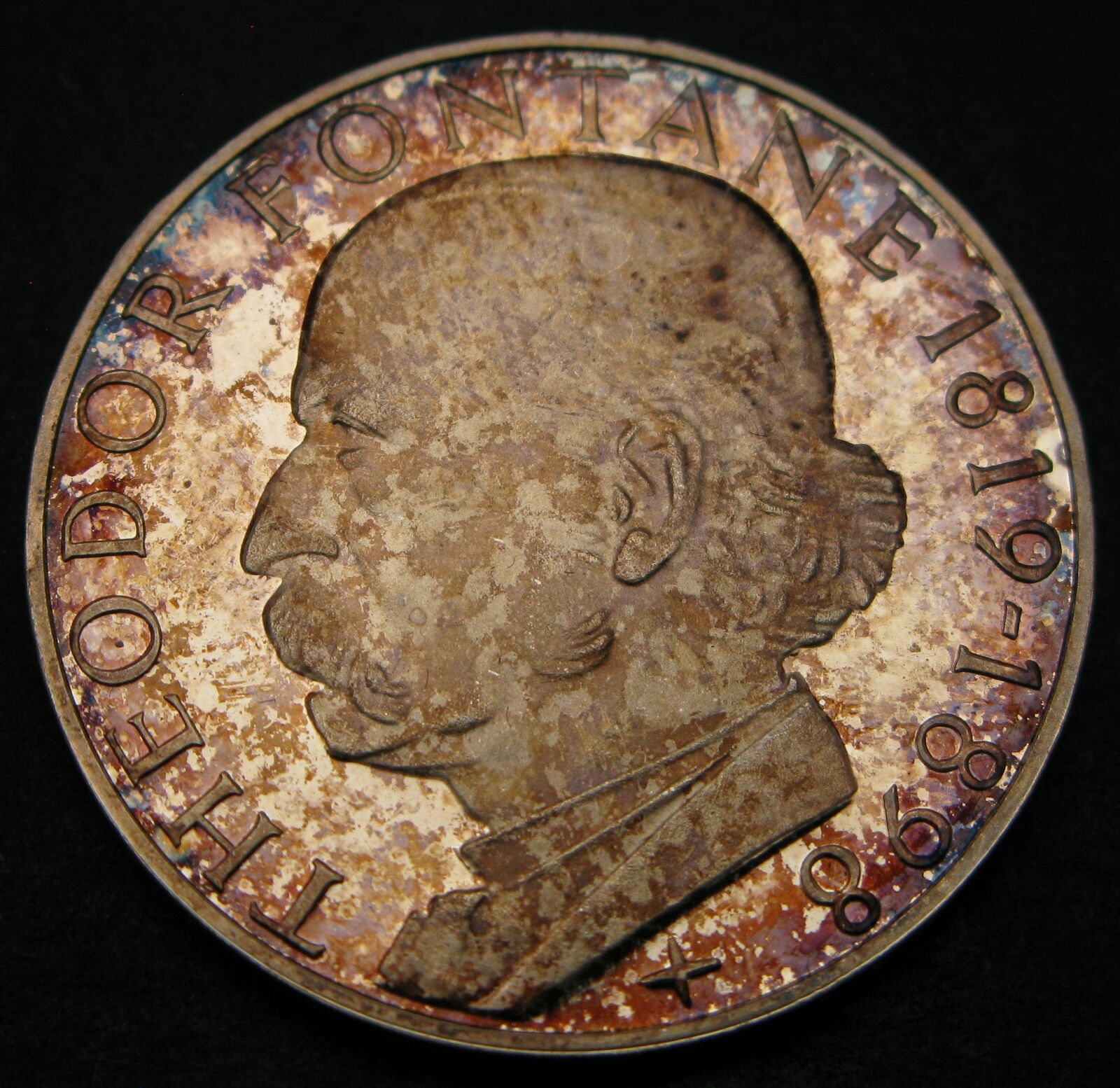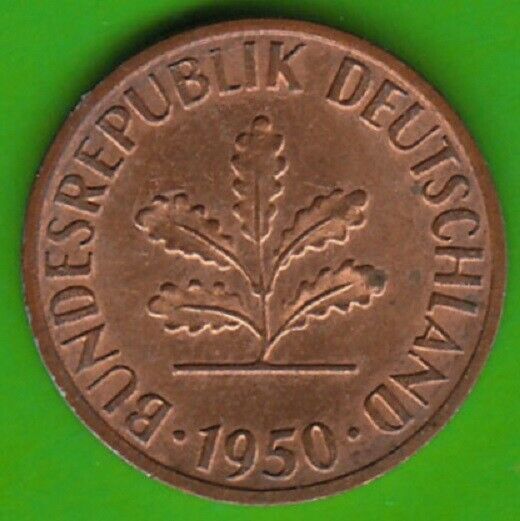-40%
1995 GERMANY Frauenkirche Church Dresden Proof Silver German 10 Mark Coin i75142
$ 41.6
- Description
- Size Guide
Description
Item:i75142
Authentic Coin of:
Germany
- 50th anniversary of destruction of Frauenkirche in Dresden
1995 J Proof
Silver 10 Mark 32mm (
15.52
grams) 0.625 Silver (0.3115 oz. ASW)
Reference: KM# 185
BUNDESREPUBLIK DEUTSCHLAND 10 DEUTSCHE MARK 19 95 J, Heraldic Eagle.
50 JAHRE MAHNUNG ZU FRIEDEN UND VERSÖHNUNG WIEDER AUFBAU FRAUEN- KIRCHE DRESDEN, Ruins of Frauen Kirche in Dresden.
Edge Lettering: STEINERNE GLOCKE - SYMBOL FÜR TOLERANZ
You are bidding on the exact item pictured, provided with a Certificate of Authenticity and Lifetime Guarantee of Authenticity.
The
Dresden Frauenkirche
(German:
Dresdner Frauenkirche
, IPA: [ˈfʁaʊənˌkɪʁçə],
Church of Our Lady
) is a Lutheran church in Dresden, the capital of the German state of Saxony. An earlier church building was Catholic until it became Protestant during the Reformation.
The old church was replaced in the 18th century by a larger Baroque Lutheran building. It is considered an outstanding example of Protestant sacred architecture, featuring one of the largest domes in Europe. It was originally built as a sign of the will of the citizen of Dresden to remain Protestant after their ruler had converted to Catholicism. It now also serves as a symbol of reconciliation between former warring enemies.
Built in the 18th century, the church was destroyed in the bombing of Dresden during World War II. The remaining ruins were left for 50 years as a war memorial, following decisions of local East German leaders. The church was rebuilt after the reunification of Germany, starting in 1994. The reconstruction of its exterior was completed in 2004, and the interior in 2005. The church was reconsecrated on 30 October 2005 with festive services lasting through the Protestant observance of Reformation Day on 31 October. The surrounding Neumarkt square with its many valuable baroque buildings was also reconstructed in 2004.
The Frauenkirche is often called a cathedral, but it is not the seat of a bishop; the church of the
Landesbischof
of the Evangelical-Lutheran Church of Saxony is the Church of the Cross. Once a month, an Anglican Evensong is held in English, by clergy from St. George's Anglican Church, Berlin.
Dresden
is the capital city and, after Leipzig, the second-largest city of the Free State of Saxony in Germany. It is situated in a valley on the River Elbe, near the border with the Czech Republic.
Dresden has a long history as the capital and royal residence for the Electors and Kings of Saxony, who for centuries furnished the city with cultural and artistic splendor, and was once by personal union the family seat of Polish monarchs. The city was known as the Jewel Box, because of its baroque and rococo city centre. The controversial American and British bombing of Dresden in World War II towards the end of the war killed approximately 25,000 people, many of whom were civilians, and destroyed the entire city centre. After the war restoration work has helped to reconstruct parts of the historic inner city, including the Katholische Hofkirche, the Zwinger and the famous Semper Oper.
Since German reunification in 1990 Dresden is again a cultural, educational and political centre of Germany and Europe. The Dresden University of Technology is one of the 10 largest universities in Germany and part of the German Universities Excellence Initiative. The economy of Dresden and its agglomeration is one of the most dynamic in Germany and ranks first in Saxony. It is dominated by high-tech branches, often called "Silicon Saxony". The city is also one of the most visited in Germany with 4.3 million overnight stays per year. The royal buildings are among the most impressive buildings in Europe. Main sights are also the nearby National Park of Saxon Switzerland, the Ore Mountains and the countryside around Elbe Valley and Moritzburg Castle. The most prominent building in the city of Dresden is the Frauenkirche. Built in the 18th century, the church was destroyed during World War II. The remaining ruins were left for 50 years as a war memorial, before being rebuilt between 1994 and 2005.
According to the Hamburgische Weltwirtschaftsinstitut (HWWI) and Berenberg Bank in 2017, Dresden has the fourth best prospects for the future of all cities in Germany.
Although Dresden is a relatively recent city of Germanic origin followed by settlement of Slavic people, the area had been settled in the Neolithic era by Linear Pottery culture tribes ca. 7500 BC. Dresden's founding and early growth is associated with the eastward expansion of Germanic peoples, mining in the nearby Ore Mountains, and the establishment of the Margraviate of Meissen. Its name etymologically derives from Old Sorbian
Drežďany
, meaning
people of the forest
. Dresden later evolved into the capital of Saxony.
The Elector and ruler of Saxony Frederick Augustus I became King Augustus II the Strong of Poland in 1697. He gathered many of the best musicians, architects and painters from all over Europe to the newly named Royal-Polish Residential City of Dresden. His reign marked the beginning of Dresden's emergence as a leading European city for technology and art. During the reign of Kings Augustus II the Strong and Augustus III of Poland most of the city's baroque landmarks were built. These include the Zwinger Royal Palace, the Japanese Palace, the Taschenbergpalais, the Pillnitz Castle and the two landmark churches: the Catholic Hofkirche and the Lutheran Frauenkirche. In addition significant art collections and museums were founded. Notable examples include the Dresden Porcelain Collection, the Collection of Prints, Drawings and Photographs, the Grünes Gewölbe and the Mathematisch-Physikalischer Salon. In 1729, by decree of King Augustus II the first Polish Military Academy was founded in Dresden. In 1730, it was relocated to Warsaw. Dresden suffered heavy destruction in the Seven Years' War (1756-1763), following its capture by Prussian forces, its subsequent re-capture, and a failed Prussian siege in 1760. Friedrich Schiller wrote his
Ode to Joy
(the literary base of the European anthem) for the Dresden Masonic lodge in 1785.
[
citation needed
]
During the decline of Poland Dresden was site of preparations for the Polish Kościuszko Uprising.
The city of Dresden had a distinctive silhouette, captured in famous paintings by Bernardo Bellotto and by Norwegian painter Johan Christian Dahl. Between 1806 and 1918 the city was the capital of the Kingdom of Saxony (which was a part of the German Empire from 1871). During the Napoleonic Wars the French emperor made it a base of operations, winning there the famous Battle of Dresden on 27 August 1813. Following the November Uprising (1831) many Poles, including writers Juliusz Słowacki, Stefan Florian Garczyński, Klementyna Hoffmanowa and composer Frédéric Chopin, fled from the Russian Partition of Poland to Dresden. Also national poet Adam Mickiewicz stayed several months in Dresden, starting in March 1832. He wrote the poetic drama
Dziady, Part III
there. Dresden saw a further influx of Poles after the 1848 and 1863 uprisings, amongst whom were authors Teofil Lenartowicz, Józef Ignacy Kraszewski and Wawrzyniec Benzelstjerna Engeström. Dresden itself was a centre of the German Revolutions in 1848 with the May Uprising, which cost human lives and damaged the historic town of Dresden.
During the 19th century, the city became a major centre of economy, including motor car production, food processing, banking and the manufacture of medical equipment.
In the early 20th century, Dresden was particularly well known for its camera works and its cigarette factories. Between 1918 and 1934, Dresden was capital of the first Free State of Saxony. Dresden was a centre of European modern art until 1933.
Germany
, officially the
Federal Republic of
Germany
is a federal parliamentary republic in western-central Europe. It includes 16 constituent states and covers an area of 357,021 square kilometres (137,847 sq mi) with a largely temperate seasonal climate. Its capital and largest city is Berlin. With 81 million inhabitants, Germany is the most populous member state in the European Union. After the United States, it is the second most popular migration destination in the world.
Various Germanic tribes have occupied northern Germany since classical antiquity. A region named Germania was documented before 100 CE. During the Migration Period the Germanic tribes expanded southward. Beginning in the 10th century, German territories formed a central part of the Holy Roman Empire. During the 16th century, northern German regions became the centre of the Protestant Reformation.
The rise of Pan-Germanism inside the German Confederation resulted in the unification of most of the German states in 1871 into the Prussian-dominated German Empire. After World War I and the German Revolution of 1918-1919, the Empire was replaced by the parliamentary Weimar Republic. The establishment of the Third Reich in 1933 led to World War II and the Holocaust. After 1945, Germany split into two states, East Germany and West Germany. In 1990, the country was reunified.
In the 21st century, Germany is a great power and has the world's fourth-largest economy by nominal GDP, as well as the fifth-largest by PPP. As a global leader in several industrial and technological sectors, it is both the world's third-largest exporter and importer of goods. Germany is a developed country with a very high standard of living sustained by a skilled and productive society. It upholds a social security and universal health care system, environmental protection and a tuition free university education.
Germany was a founding member of the European Union in 1993. It is part of the Schengen Area, and became a co-founder of the Eurozone in 1999. Germany is a member of the United Nations, NATO, the G8, the G20, and the OECD. The national military expenditure is the 9th highest in the world. Known for its rich cultural history, Germany has been continuously the home of influential artists, philosophers, musicians, sportsmen, entrepreneurs, scientists and inventors.
Frequently Asked Questions
Mr. Ilya Zlobin
, world-renowned expert numismatist, enthusiast, author and dealer in authentic ancient Greek, ancient Roman, ancient Byzantine, world coins & more.
Who am I dealing with?
You are dealing with Ilya Zlobin, ancient coin expert, enthusiast, author and dealer with an online store having a selection of over 15,000 items with great positive feedback from verified buyers and over 10 years experience dealing with over 57,000 ancient and world coins and artifacts. Ilya Zlobin is an independent individual who has a passion for coin collecting, research and understanding the importance of the historical context and significance all coins and objects represent. Most others are only concerned with selling you, Ilya Zlobin is most interested in educating you on the subject, and providing the largest selection, most professional presentation and service for the best long-term value for collectors worldwide creating returning patrons sharing in the passion of ancient and world coin collecting for a lifetime.
How long until my order is shipped?
Orders are shipped by the next business day (after receipt of payment) most of the time.
How will I know when the order was shipped?
After your order has shipped, you will be left positive feedback, and that date could be used as a basis of estimating an arrival date. Any tracking number would be found under your 'Purchase history' tab.
USPS First Class mail takes about 3-5 business days to arrive in the U.S. International shipping times cannot be estimated as they vary from country to country.
Standard international mail to many countries
does not
include a tracking number, and can also be slow sometimes.
For a tracking number and signature confirmation, you may want to do Express Mail International Shipping, which costs more, however, is the fastest and most secure. Additionally you may be able to receive your order in as little as 3-5 business days using this method. For Express Mail International, it may be possible to place up to 10-15 items in one package (for the one shipping cost) as it is flat rate envelope, which may be the most cost-effective, secure and fastest way to receive items internationally. Send me a message about this and I can update your invoice should you want this method.
Getting your order to you, quickly and securely is a top priority and is taken seriously here.
Great care is taken in packaging and mailing every item securely and quickly.
Please be aware, I cannot take responsibility for any postal service delivery delays, especially for international packages as it may happen in rare instances.
What is a certificate of authenticity and what guarantees do you give that the item is authentic?
Each of the items sold here, is provided with a Certificate of Authenticity, and a Lifetime Guarantee of Authenticity, issued by a world-renowned numismatic and antique expert that has identified over 57,000 ancient coins and has provided them with the same guarantee. You will be very happy with what you get with the COA; a professional presentation of the coin, with all of the relevant information and a picture of the coin you saw in the listing. Additionally, the coin is inside it's own protective coin flip (holder), with a 2x2 inch description of the coin matching the individual number on the COA.
On the free-market such a presentation alone, can be considered a - value all in itself, and it comes standard with your purchases from me,
FREE.
With every purchase, you are leveraging my many years of experience to get a more complete context and understanding of the piece of history you are getting. Whether your goal is to collect or give the item as a gift, coins presented like this could be more prized and valued higher than items that were not given such care and attention to.
Buy a coin today and own a piece of history, guaranteed.
Is there a money back guarantee?
I offer a 30 day unconditional money back guarantee. I stand behind my coins and would be willing to exchange your order for either store credit towards other coins, or refund, minus shipping expenses, within 30 days from the receipt of your order. My goal is to have the returning customers for a lifetime, and I am so sure in my coins, their authenticity, numismatic value and beauty, I can offer such a guarantee.
When should I leave feedback?
Once you receive your order, please leave a positive feedback. Please don't leave any negative feedbacks, as it happens sometimes that people rush to leave feedback before letting sufficient time for their order to arrive. Also, if you sent an email, make sure to check for my reply in your messages before claiming that you didn't receive a response. The matter of fact is that any issues can be resolved, as reputation is most important to me. My goal is to provide superior products and quality of service.
How and where do I learn more about collecting ancient coins?
Visit the "
Guide on How to Use My Store
" for on an overview about using my store, with additional information and links to all other parts of my store which may include educational information on topics you are looking for.

